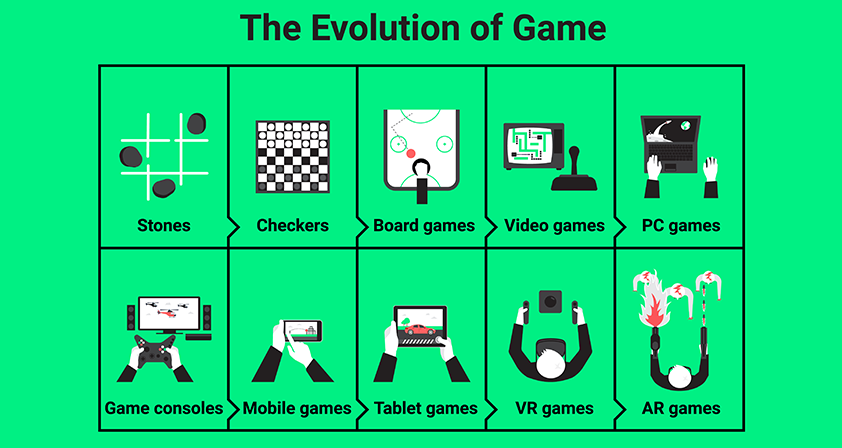The Evolution of HTML5 Gaming Technology: What’s Next?
HTML5 gaming technology represents a significant paradigm shift in the development of online gaming and interactive media. In the past decade, this technology has transformed from a mere novelty into a powerful tool for developers worldwide. With the advent of smartphones and high-speed internet, the landscape of gaming has fundamentally altered, leading to a proliferation of accessible and engaging gaming experiences.
As we delve into the evolution and trajectory of HTML5 gaming technology, it is imperative to consider both its historical context and its potential future implications. The evolution of HTML5 has encapsulated various developmental milestones that have shaped contemporary gaming, while also indicating pathways for future innovation. This discourse will examine the significant advancements, challenges, and future possibilities intertwined with HTML5 gaming technology.
Understanding the Historical Context of HTML5 Gaming
The inception of HTML5 occurred in the late 2000s, with the aim of offering developers a more robust framework for building web applications. One of the pioneering benefits of HTML5 is its capacity for multimedia embedding without the necessity for plug-ins such as Adobe Flash. This improvement catalyzed a broad array of opportunities for game developers seeking to create immersive experiences via the browser.
In 2010, influential gaming engines such as Phaser and CreateJS emerged, further propelling HTML5 into the gaming sphere. These engines provided developers with game templates and tools that simplified the process of generating compelling gameplay experiences. The combination of HTML5’s inherent capabilities and these powerful frameworks facilitated the creation of dynamic and visually rich games, establishing a vibrant ecosystem for browser-based gaming.
Transitioning away from traditional plug-in-based development allowed for enhanced compatibility across various devices. With the burgeoning popularity of mobile phones, including smartphones equipped with advanced graphics processors, HTML5 games could now reach an unprecedented audience. The foresight of developers who invested their resources into HTML5 gaming now underscores the historical paradigm shift that has taken place.
Advancements in Performance and Graphics
The performance and graphical capabilities of HTML5 gaming technology have undergone remarkable evolution. Originally, HTML5 games were limited in their graphical fidelity and performance due to browser constraints. However, ongoing advancements in WebGL (Web Graphics Library) and hardware acceleration have significantly enhanced rendering abilities.
The advent of WebGL allowed for real-time 3D graphics within web browsers, providing developers with tools to create more complex and visually stunning experiences. Complex shaders, particle systems, and sophisticated animation techniques can now seamlessly operate in the browser environment. Consequently, this transformation has obliterated the perception that HTML5 games are inferior to their native counterparts.
Furthermore, the improvement of web APIs, such as Web Audio API, has enabled developers to craft intricate soundscapes. The incorporation of advanced audio features enriches the gaming experience. As such, players are immersed in a more holistic world, where auditory stimuli complement visual elements, leading to increased engagement and emotional investment in the gameplay.
Cross-Platform Accessibility: The Golden Era of Gaming
One of the most transformative aspects of HTML5 gaming is its inherent cross-platform accessibility. Unlike traditional gaming platforms that typically restrict players to specific operating systems or hardware configurations, HTML5 games can be played across a wide variety of devices. This universality presents unprecedented opportunities for developers to reach broader audiences and foster inclusive gaming communities.
The rise of responsive web design has further facilitated this cross-platform phenomenon. Developers can design games that automatically adjust to various screen sizes and resolutions, ensuring a consistent user experience. As a result, players transition effortlessly from a desktop computer to a mobile device without losing gameplay continuity.
This accessibility can rejuvenate the gaming industry by attracting a demographic that may not typically engage with gaming. Casual gamers, who may be hesitant to commit to traditional console gaming, find HTML5 games readily available and easy to navigate. In this context, HTML5 serves as an entry point for new gamers and enhances the diversity of the gaming community.
Challenges on the Horizon: Addressing Performance Gaps
Despite the notable advancements in HTML5 gaming technology, it is crucial to recognize the challenges that loom on the horizon. While many of the earlier limitations associated with HTML5 have been addressed, developers still grapple with performance optimization, especially in graphics-intensive applications.
One prominent issue lies in the variability of browser implementations. Not all web browsers exhibit the same handling capabilities for HTML5 technologies, potentially leading to inconsistent experiences across platforms. Developers may find themselves navigating a complex landscape of compatibility checks and performance tweaks to ensure that their games function smoothly on all popular browsers.
Additionally, while HTML5 has made strides in enhancing performance, it cannot yet wholly replace the bespoke optimization available within native applications. Developers crafting high-performance games may still find it necessary to rely on platform-specific languages and frameworks, thereby limiting the full realization of HTML5’s potential. Bridging this gap necessitates ongoing collaboration between browser developers and gaming communities.
Imagining the Future: Innovations on the Horizon
The future of HTML5 gaming technology holds immense promise. As artificial intelligence continues to evolve, its integration into gaming could spur the development of personalized gaming experiences that adapt to individual player preferences. This innovation could represent a pivotal shift, enabling developers to create games that not only engage players but also learn and grow alongside them.
Furthermore, the possibilities embedded within augmented reality (AR) and virtual reality (VR) cannot be overlooked. HTML5 technology could serve as a foundational platform for immersive AR and VR experiences. As web browsers evolve to accommodate sophisticated AR and VR frameworks, developers may harness the power of HTML5 to deliver spectacular 3D adventures that support cross-device interaction.
Moreover, the advent of 5G technology stands to revolutionize online gaming by significantly reducing latency and enhancing data transfer speeds. This improved infrastructure could facilitate more complex multiplayer interactions, further enriching the community-centric aspects of gaming. Games that leverage real-time interactions could foster deeper player engagement and facilitate collaborative experiences across vast distances.
Conclusion: Embracing the Infinite Possibilities
The evolution of HTML5 gaming technology embodies a multifaceted journey marked by innovation, challenges, and the potential for transformative experiences. As developers continue to explore the extensive capabilities of HTML5, the future beckons with opportunities for creativity and technological advancement.
The interplay between web technology and gaming is not merely a fleeting trend; it is indicative of a profound cultural shift in how we conceive interactive entertainment. By examining both the historical context and future possibilities, it becomes evident that HTML5 gaming technology will remain at the forefront of the gaming industry, continuing to shape the experiences of players worldwide.
As we stand on the precipice of further advancements, it is essential to embrace the infinite possibilities that HTML5 gaming technology affords. The convergence of performance enhancements, cross-device compatibility, and innovative paradigms will undoubtedly forge a new era in gaming that is yet to be fully realized.



